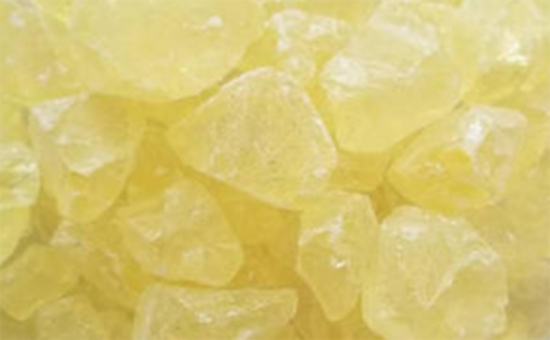
EPDM rubber has inherited the basic molecular structure and performance characteristics of EPDM rubber. It can be used alone or in combination with EPDM rubber to produce various high and low temperature resistant and anti-aging rubber products. Due to the presence of unsaturated double bonds in EPDM / recycled rubber, reactive phenolic resin vulcanization systems can be used. The rubber compound vulcanized with phenolic resin has unique advantages and also has certain disadvantages. Rubber product manufacturers need to determine whether to use phenolic resin vulcanized ethylene-propylene-diene rubber compound according to specific needs, and how to design a phenolic resin vulcanization system.
1. Phenolic resin curing mechanism
When EPDM / recycled rubber is selected for phenolic resin curing, the curing process is performed under acidic conditions. After the ether bonds in the phenolic resin are decomposed under acidic conditions, they are cross-linked according to the carbocation mechanism. The methylene cross-links formed are relatively rigid and stable. The vulcanized ethylene-propylene-diene rubber has greater hardness. Good heat resistance and compression set resistance.
2. Application skills of phenolic resin in EPDM compound
When EPDM or EPDM rubber is selected as the phenolic resin 2LLYY0323 for vulcanization, alkyl phenolic resins such as tert-butyl phenolic resin 2402 are generally used, with appropriate amount of activator such as stannous chloride, or zinc oxide and Halogen-containing compounds are due to the low vulcanization activity of phenolic resins and the need for activators. In general, the amount of phenolic resin vulcanized EPDM compound should be controlled to more than 10 parts.
EPDM rubber products manufacturers can also directly use halogen-containing phenolic resins such as 201 resin. Without adding an additional activator, 8-10 parts of halogen-containing phenolic resin can achieve a high vulcanization effect. The tensile strength, set stress and hardness of EPDM vulcanizates vulcanized with phenolic resin will decrease with the increase of the amount of phenolic resin, the elongation at break will be reduced, and the elongation at break is strict The amount of phenolic resin needs to be controlled in the vulcanization system of EPDM rubber products.
3. Deficiencies of phenolic resin vulcanized EPDM compounds
When using phenolic resin to vulcanize EPDM rubber or EPDM rubber, the vulcanization speed is slow (requires the activation of activator), the vulcanized rubber has an odor, and the compression set of the rubber is too large, and the comprehensive properties of the vulcanized rubber are easily affected by alkali. The effect of substances and fillers, so only certain EPDM products are usually vulcanized with phenolic resin.
Phenolic resins can be used not only as vulcanizing agents, but also as plasticizers and modifiers in the production of EPDM / recycled rubber products. When using phenolic resin vulcanized EPDM rubber compounds, rubber product manufacturers must choose the appropriate phenolic resin products according to actual needs to optimize the comprehensive indicators of EPDM vulcanizates.
Exclusive original article [commercial authorization] reprint, excerpt and excerpt in any form are prohibited without written authorization. Focus on Hongyun rubber: learn the process formula and raw material technology of producing rubber products from recycled rubber to help you reduce costs and increase profits